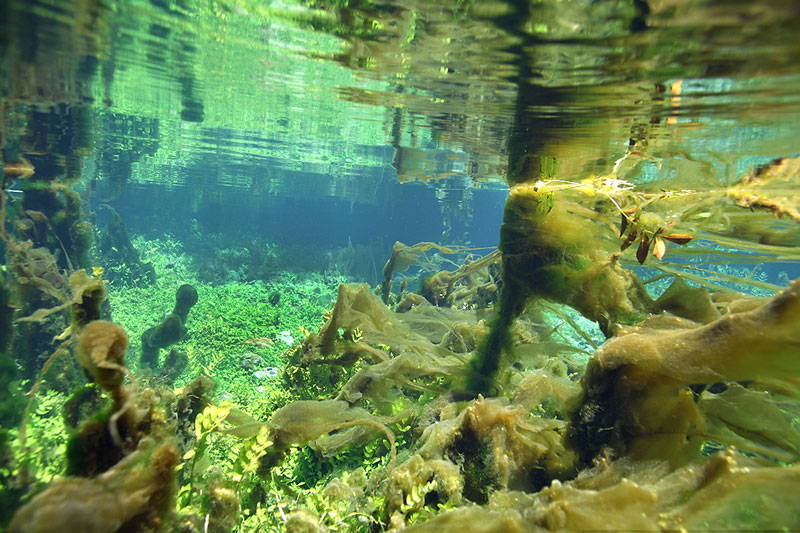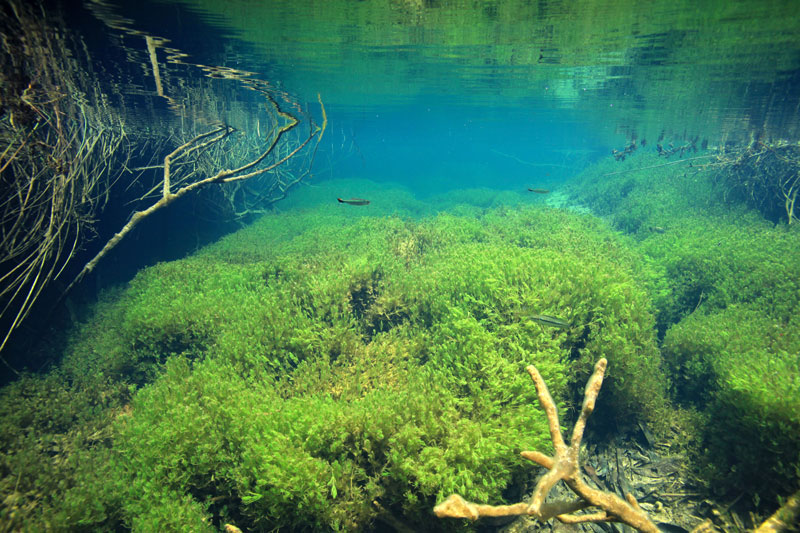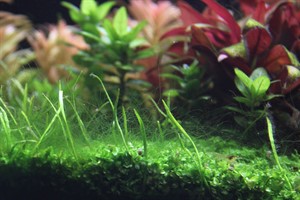are algae?

Algae were the first organisms on our planet to produce energy from sunlight.
These so-called blue-green algae were the reason our oxygen-rich atmosphere formed. The algae evolved, and now we have hundreds of thousands of different algae species.
Today they are responsible for 40% of the oxygen produced on our planet. Without algae, higher plants as we know them today, could not have developed. The green leaf color (due to chlorophyll)can be traced back to blue-green algae migrating into the tissue of very early plants.
Algae provide nutrients as an important food source for different animals.Additionally, they produce oxygen when they photosynthesize. In our aquaria, algae are direct competitors of the aquatic plants we cultivate, a competition that can also be observed in nature.
During our Plantahunter tours we have seen and documented this phenomenon time and again: in nutrient-rich water bodies low in oxygen, as well as in water with high carbon dioxide where true aquatic plants and marsh plants are at their optimum.
In areas with high oxygen content, trace elements are often oxidized and precipitate and carbon dioxide is low. In these conditions, algae do much better than higher plants.
"Algae are ugly" — this is a statement you will often hear from aquarium hobbyists. We have realized through our Plantahunter tours, that this statement is not always true.
The world of stoneworts is multifaceted and very interesting. These algae look more like a flowering plant, and you can easily mistake them for the more well known hornwort Ceratophyllum. It's no surprise that some botanists hypothesize that stoneworts are the direct ancestors of our modern terrestrial plants.
The genus Chara, the botanical name for stoneworts, can be found on every continent. There are several different species in Europe, even in Germany.
There is one thing they all have in common: they like water with low levels of nutrients and prefer high lime content. As many water bodies are more and more polluted with organic waste, most Chara species are found on the Red List of Endangered Species.

Wherever you see stoneworts, you may safely assume that the environment is still intact. During our Plantahunter tour in Brazil, we found this gracefully beautiful algae for the first time, and only one year later, we encountered it again on the island of Sulawesi. The multitude of Chara forms in the Malili Lake System was absolutely stunning and fascinated us deeply.
_____________
Interesting isn't it? Discover next:

Common algae species